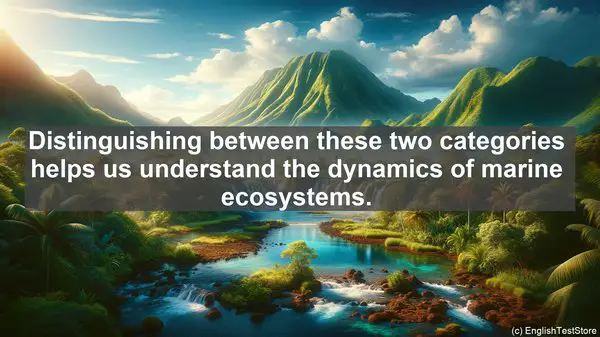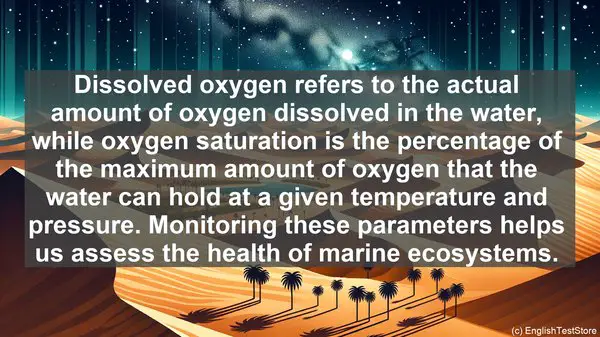Introduction
Welcome to today’s lesson on marine microbiology. In this lesson, we’ll be discussing the top 10 commonly confused words in this field. Understanding these distinctions is crucial for a comprehensive grasp of the subject. So, let’s dive in!
1. Bacteria vs. Archaea
Often used interchangeably, bacteria and archaea are two distinct domains of microorganisms. While both are single-celled, bacteria are found in diverse environments, including marine habitats. On the other hand, archaea are known for their ability to thrive in extreme conditions, such as deep-sea hydrothermal vents. Understanding their differences is essential for accurate classification and research.
2. Plankton vs. Nekton
When we think of marine life, we often envision large fish swimming in the open ocean. However, not all organisms have the ability to actively swim against the currents. Plankton refers to the tiny, often microscopic, organisms that drift along with the ocean currents. Nekton, on the other hand, includes larger, more mobile organisms, such as fish, turtles, and marine mammals. Distinguishing between these two categories helps us understand the dynamics of marine ecosystems.
3. Autotroph vs. Heterotroph
In any ecosystem, including the marine environment, there are organisms that can produce their own food and those that rely on consuming other organisms. Autotrophs, like algae, use sunlight or inorganic compounds to synthesize organic matter. Heterotrophs, on the other hand, obtain their energy by consuming other organisms. This distinction is crucial in understanding the flow of energy and nutrients in marine food webs.

4. Eutrophication vs. Oligotrophication
The balance of nutrients in marine ecosystems plays a significant role in their health. Eutrophication refers to the excessive enrichment of water bodies with nutrients, often due to human activities like agriculture or sewage discharge. This can lead to harmful algal blooms and oxygen depletion. Oligotrophication, on the other hand, is the process of nutrient depletion, often occurring in remote or deep-sea environments. Understanding these processes helps us address and mitigate the impacts of human activities on marine ecosystems.
5. Phytoplankton vs. Zooplankton
Plankton, as we discussed earlier, encompasses a wide range of organisms. Within this category, there are two main types: phytoplankton and zooplankton. Phytoplankton are the primary producers, using photosynthesis to convert sunlight into energy. They form the base of the marine food web. Zooplankton, on the other hand, are the consumers, feeding on phytoplankton or other zooplankton. Both are integral to the functioning of marine ecosystems.

6. Benthic vs. Pelagic
When we talk about the marine environment, it’s not just about the water column. The seafloor, or benthic zone, is a crucial habitat as well. Pelagic, on the other hand, refers to the water column itself. Understanding the differences between these two zones helps us study and conserve the diverse range of organisms that call the ocean home.
7. Symbiosis vs. Mutualism
In the complex web of interactions in marine ecosystems, symbiosis and mutualism are two important concepts. Symbiosis refers to a close and long-term association between two organisms, which can be beneficial, detrimental, or neutral. Mutualism, on the other hand, specifically denotes a symbiotic relationship where both organisms benefit. Examples of mutualistic relationships in the marine environment include coral and zooxanthellae. Understanding these relationships enhances our understanding of the interconnectedness of marine life.
8. Dissolved Oxygen vs. Oxygen Saturation
Oxygen is crucial for the survival of marine organisms. When we talk about oxygen in the water, there are two main measurements: dissolved oxygen and oxygen saturation. Dissolved oxygen refers to the actual amount of oxygen dissolved in the water, while oxygen saturation is the percentage of the maximum amount of oxygen that the water can hold at a given temperature and pressure. Monitoring these parameters helps us assess the health of marine ecosystems.
9. Estuary vs. Delta
Estuaries and deltas are both unique habitats where rivers meet the ocean. While they share some similarities, there are distinct differences. An estuary is a partially enclosed coastal body of water, where freshwater from rivers mixes with saltwater from the ocean. Deltas, on the other hand, are landforms formed by the deposition of sediment carried by rivers. Understanding these features is important for studying coastal processes and the associated biodiversity.
10. Nitrification vs. Denitrification
The nitrogen cycle is a crucial biogeochemical process in marine ecosystems. Nitrification is the conversion of ammonia to nitrate, an essential nutrient for primary producers. Denitrification, on the other hand, is the process where nitrate is converted back to nitrogen gas, completing the cycle. Balancing these processes is important for maintaining the nutrient dynamics of marine ecosystems.
